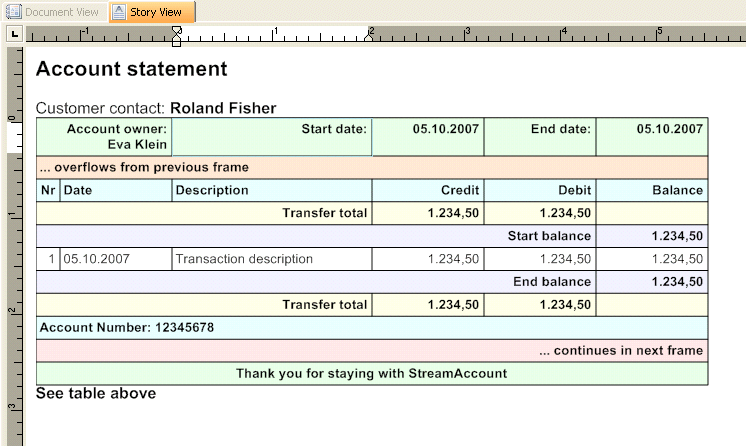In the following example a table is created in a Story. The table can overflow to another Story frame, depending on if the input data requires it.
|
3
|
The third red row is a header row, with occurrence set to All but First Instance. This row will be rendered above the green row above.
|
|
5
|
The fifth yellow row is a header row, with occurrence set to All but First Instance. This row includes a Substitution of type Subtotal.
|
|
9
|
The nineth yellow row, is a Footer row, with occurrence set to All but Last Instance. This row includes a Substitution of type Subtotal.
|
This means, that if the Event results in more Body rows than fit into the Story frame, another instance of the table is created. The second instance of the table can be either in a Story frame on the same page, or, if you only have one Story frame on the page, on a new instance of the page.
If two instances is enough to fit all repeated body rows, the first table instance contains rows 1, 2, 4, 6, 7, 9, 10, and 11. The last table instance contains rows 2, 3, 4, 5, 7, 8, 10, and 12.
If more than two instances are required to fit all repeated body rows, the table instances, except the first and last, will contain rows 2, 3, 4, 5, 7, 9, 10, and 11.

